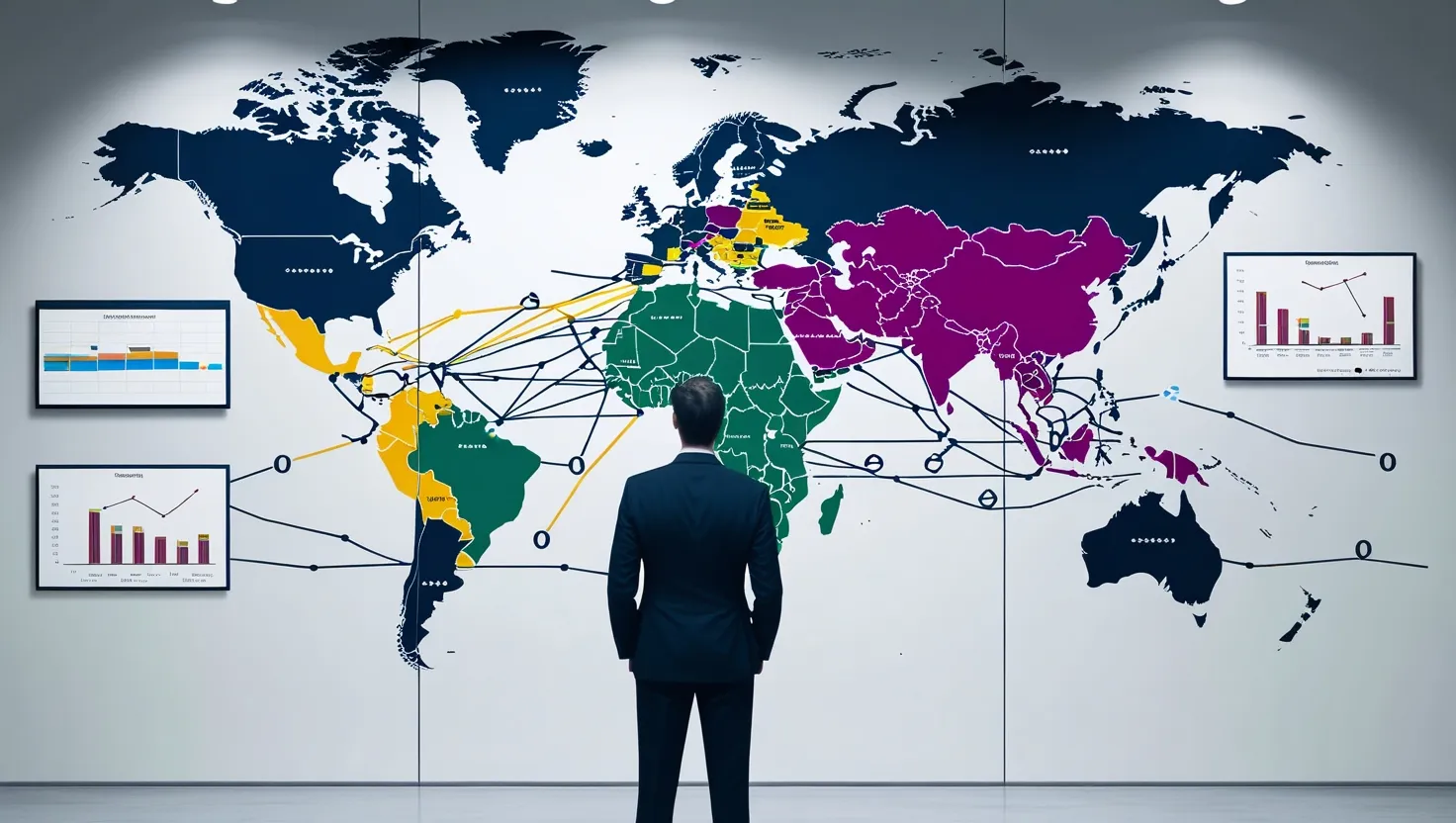Imagine waking up to a news alert about sanctions being imposed on a country where your key supplier operates. Your mind races: what’s my exposure, which products are at risk, and are my financial hedges still holding up? In today’s world, geopolitics has become so tightly woven into the fabric of global business that there’s no ignoring its pulse. I’ve found the smartest companies ride these currents with a toolkit built for surprise—balancing cost, speed, and resilience in creative ways.
Let’s talk about supply chain regionalization. Once, we marveled at just-in-time logistics and sprawling, cross-border supplier webs. But recent history tells us that ultra-efficient global chains can snap under pressure. Semiconductor firms, for example, used to funnel much of their manufacturing through Taiwan, drawn by expertise and established networks. Now, geopolitical questions about the Taiwan Strait have sent shockwaves through corporate boardrooms. These companies are spreading operations into South Korea, Japan, and the United States. It’s a calculated wager: pay higher upfront costs for new plants and more localized inventory, but gain the freedom to reroute production if borders tighten. In a survey I recently read, nearly four out of five supply chains faced disruptions last year. That’s not just bad luck—it’s a sign that “just-in-case” is the new normal.
Why did companies take so long to pivot? Efficiency has been the gold standard, but the price of disruption—lost market share, months of missed sales—can outstrip savings in a single bad quarter. Think of Samsung, which spread its chip factories across multiple countries, effectively creating a buffer against both political flare-ups and natural disasters. The result: when one site hiccups, the rest keep humming. For smaller firms, regionalization doesn’t have to mean new factories; sometimes, it’s as simple as dual-sourcing or building flexibility into contracts. The real art is figuring out just how much redundancy to build in—enough to cushion shocks, but not so much that costs balloon.
“Strategy is about making choices, trade-offs; it’s about deliberately choosing to be different.”
—Michael Porter
Money, too, doesn’t sleep during turmoil. Currency swings can turn yesterday’s profit into today’s loss. That’s why dynamic currency hedging is gaining ground. Instead of locking in long-term contracts and hoping for the best, companies are tweaking positions often—sometimes daily—using predictive analysis and automation. This approach came into sharp relief when volatile exchange rates punished businesses with single-currency exposures. Unilever’s treasury team, for example, adapted by layering hedges with varying expiry dates, smoothing out earnings even when the pound, euro, or yuan took a ride. Dynamic hedging isn’t free; transaction fees and the risk of “over-hedging” lurk. But in today’s climate, the cost of inaction is usually greater.
Here’s a question: if your main customer pays in euros and your biggest expenses are in dollars, do you have a Plan B if those currencies suddenly diverge? If you’re not running regular currency stress tests, you’re flying blind.
Amid all this, companies are looking to insurance for cover—specifically, political risk insurance. This isn’t your average policy. It protects against expropriation, political violence, or even government-imposed currency controls. While energy and mining firms have long relied on such tools, more sectors are catching on. Consider the case of a major mining company forced out of an African country after a sudden regime change; their political risk cover softened the financial blow, allowing them to redeploy capital and maintain investor trust. There’s a cost to these policies, sometimes a significant one, but for firms with assets in volatile geographies, it’s a question of survival. Would you rather pay a known premium or gamble with billions at risk?
“An investment in knowledge pays the best interest.”
—Benjamin Franklin
Planning for the unexpected is a discipline all its own. Scenario planning frameworks are gaining traction at the C-suite level. The best teams don’t just sketch out best- and worst-case scenarios—they build playbooks for each, backed by real-time data and clear decision triggers. It’s not enough to say, “If a trade war happens, we’ll brainstorm options.” Instead, they ask: If tariffs hit 25%, which products are viable, and how quickly can we switch suppliers or reroute shipments? These simulations become drills for management, keeping the business limber and alert. They can also reveal hidden choke points, be it a single-source raw material or an overlooked regulatory hurdle.
There’s also a psychological benefit here. When employees see leadership actively stress-testing assumptions and acting on early warnings, it builds confidence. How often do you run scenario exercises for your own team? Are your contingency plans just documents on a shelf, or living playbooks updated as the world shifts?
In a time when headlines change by the hour, diversifying revenue streams is another powerful shield. Companies less tied to a single country or product line weather global shocks better. Take, for instance, firms that expanded into markets with little correlation to traditional hotspots—think African tech sectors or Latin American consumer brands. When one region faces turmoil, another may surge, smoothing overall volatility. Unilever’s legacy helps here: its portfolio covers food, cleaning, and personal care, serving both mature and emerging economies. This multi-pronged approach provides ballast when storms hit.
But diversification isn’t as simple as spraying money into new regions. It takes local insight, patience, and a willingness to adapt offerings. How do you decide which markets are sufficiently independent to buffer against wider shocks? Look beyond GDP numbers—examine political linkages, regulatory environments, and even cultural factors that influence resilience.
“Opportunities multiply as they are seized.”
—Sun Tzu
Tradeoffs sit at the heart of this strategic retooling. Efficiency and agility are often in tension. Localized manufacturing can cost more, but it brings faster responses and supply certainty. Currency hedges eat into margins, but shield earnings from wild swings. Political risk insurance is expensive, yet it preserves capital and reputation when the worst happens. Scenario planning takes time and money, but it saves both when disruption strikes. Diversification demands up-front investment and focus, but pays dividends in smoother growth trajectories.
Data backs this up: companies that regionalized their supply networks and adopted comprehensive risk management saw swifter recoveries and less earnings volatility after recent disruptions. On the flip side, those that clung to old models suffered longer outages and costlier rebuilds. The numbers may vary, but the direction is clear.
The question looming for every business, large or small, is: what strategies fit your scale and exposure? For a global giant, building new factories or launching in multiple regions makes sense. For a medium-sized exporter, it might be about securing better contractual terms, using flexible labor, or joining consortiums to share risk. Even startups can apply these lessons—by building in currency clauses, or designing products that suit a range of regulatory settings, they set themselves up to pivot quickly.
The costs of proactive strategies aren’t trivial. Supply chain restructuring can run to millions, even billions. But when set against the price of disruption—a factory idled for weeks, shipments trapped at borders, contracts lost to competitors—these investments look prudent. What’s more, investors reward resilience. Markets tend to favor firms that demonstrate readiness and adaptability, showing lower risk premiums and more stable valuations during global crises.
“It is not the strongest of the species that survives, nor the most intelligent, but the one most responsive to change.”
—Often attributed to Charles Darwin
I see a shift happening. In rooms once dominated by operations or finance, the geopolitical analyst now has a seat at the table. Boards drill into risk maps as deeply as they do into sales targets. The language of strategy is changing—less about maximizing output in stable times, more about constructing a business ecosystem that can flex and thrive under pressure. This doesn’t mean abandoning efficiency, but rather reimagining it as the art of balancing robustness and speed.
As global ties strengthen and fray all at once, I ask: Is your business ready for the next surprise? Have you mapped out not just today’s vulnerabilities, but tomorrow’s opportunities? If the headlines tomorrow force a rapid pivot, do you have the talent, tools, and mindset to adapt?
Every company’s journey through geopolitical uncertainty will be unique. But the principles—flexibility, foresight, and calculated risk—are universal. Building for instability is its own competitive edge. The leaders who internalize this lesson will not just survive, but shape the new era of global business.
What’s your next move?






